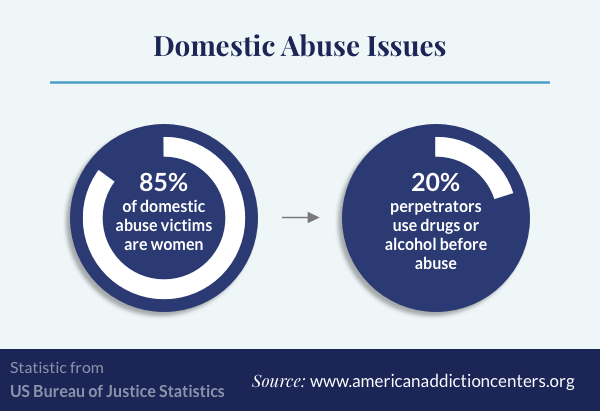Sue also reported that her consuming habits had actually altered which she had slimmed down. She indicated that she would also monitor her eating and look for assistance if needed. Takes legal action against objective in the future was to return to the treatment program attended and supply assistance to other homeowners in the program.
Sue consulted with her therapist and finished an intake interview. Based upon details gotten throughout this interview, Sues therapist, a deaf social employee, notified her that her drinking habits constituted a moderate risk. Sue was referred to a psychologist for examination of her anxiety and consuming habits. The psychologist recommended a trial on antidepressant medication and individual sessions a therapist who focused on dealing with people who experience consuming disorders.
Takes legal action against chemical dependence counselor discussed that the viewpoint of the program was to encourage her to decrease the harm she triggered herself and others through her usage of alcohol. Sue was told that abstaining was the perfect objective but that she might reach this goal slowly with time or that she could potentially remove the risks involved with drinking and ultimately be able to drink in moderation.
In therapy sessions, her counselor assisted her in the procedure of analyzing how her drinking had actually affected her life consisting of ways it had avoided her from pursuing her priorities in life. Take legal action against and her therapist created a list of Sues life concerns and short and long-term goals. They worked together to examine just how much, how typically, and under what circumstances Sue drank and what the outcomes of her drinking habits included.

Indicators on What Is The Treatment For Methamphetamine Addiction You Should Know
She was likewise provided with details Click for more info on coping and problem fixing methods, assertiveness, communication, emotional recognition and guideline, relationships, and sources of social support in the neighborhood - how to start a church based addiction treatment center. Upon completion of the 30-day outpatient treatment program Sue reported that she had actually successfully stayed abstinent for 30 days. She suggested that she had actually gained substantial insight into how her drinking negatively affected her life and expressed a desire to pursue ongoing sobriety.

Her therapist recommended that she go to AA meetings and continue her sessions with her psychologist. Debra S. Guthmann, Ed (what happens after addiction treatment). D is director of the Department of Pupil Personnel Services at the California School for the Deaf in Fremont, CA, and the former director and present project director for a long-term training and conference grant at the Minnesota Chemical Reliance Program for Deaf and Hard of Hearing People located in Minneapolis, Minnesota.
Guthmann has published numerous articles, developed materials and provided outreach and training activities nationally and globally relating to numerous aspects of compound abuse, psychological health and other subjects associated with work Deaf and difficult of hearing individuals. Katherine A. Sandberg, B.S., L.A - what is the first step toward getting treatment for alcohol addiction?.D.C., is program supervisor of the Minnesota Chemical Dependency Program for Deaf and Hard of Hearing Individuals, situated in Minneapolis, Minnesota.
Sandberg was likewise included in the development of a specialized version of the Drug Abuse Resistance Education (D.A.R.E.) Curriculum and has actually published articles, presented at conferences and workshops, provided material development and offered outreach and training activities in the location of substance abuse with Deaf and tough of hearing individuals nationally.
Some Of If You Have Obamacare How Long Can You Get Treatment For Addiction?
D., has operated at the Kansas School for the Deaf, Minnesota Chemical Dependence Program for Deaf and Hard of Hearing Individuals, Research Medical Center-Deaf Providers, and is currently used by the Missouri Department of Mental Health and has a Private Practice in the Kansas City City. Dr. Lybarger holds degrees in Indication Language Interpreting, Addiction Researches, and Therapy Psychology.
Lybarger is also a published author and a regular presenter at regional, and national conferences in concerns connected to psychological health and deafness. Alcoholics Anonymous World Services Inc. (1991 ). Twelve steps and twelve customs (45th Ed.). New York City: Alcoholics Anonymous Publishing Beck, A - how to find suboxone treatment for opiod addiction in portsmouth va.T., Wright, F.D., Newman, C.F., & Liese, B.S.
Cognitive therapy of compound abuse. New https://diigo.com/0j8os0 York City: Guilford Press. Hayes, B., Blacksher, S., Dodd, M., Fox, T., Lewis, K., & Wittman, F.D. (1993 ). The social neighborhood model for the treatment of alcohol and other drug problems. A report by the Social Model Agreement Panel convened by the California Department of Alcohol and Drug Programs, Los Angeles, CA.
( 1994 ). Designs of alcohol addiction used in treatment: Contrasting AA and other point of views with which it is often confused. Journal of Research Studies on Alcohol, 55, 159-166. Reissman, F. (1965 ). The assistant therapy principle. Social Work, 10, 27-32.
Facts About What Medical Treatment Is Available For Opioid Addiction With Alcoholism Uncovered
Author links open overlay panelZ.BerezaShow moreThe medical design assumes the professional psychotherapeutic help at all phases of the rehabilitation procedure and pharmacological treatment of comorbid mental disorders. Examination of the efficacy of the medical model rehab based on the clinical, mental, and social qualities of patients at the all stages of the treatment.
The inclusion requirements were: age above 18 years, withdrawal status. The patients were taken a look at four times: 1 throughout the very first weeks of treatment; 2 after 45 days; 3 after 6 months; 4 after 12 months. The primary examination the greatest scores kept in mind in the areas: "family and social connections", "health status", "psychiatric status" and "legal aspects" received lower scores.
Early retired patients the most high-end efficiency observed on the scale of "drug alcohol utilizing", "job/livelihood", "health status", "legal aspects", the "psychiatric status", "family and social connections" recorded lower scores. Indicators on the scale of "drug usage", "alcohol" in this group of clients was significantly higher than clients who stay on treatment, which might suggest a possible updating of the destination to the drugs.
In the course of the rehabilitation procedure revealed favorable modifications in medical, mental and social qualities of clients. Recommended articlesCiting articles (0 )Copyright 2017 Published by Elsevier Masson SAS.
Not known Incorrect Statements About What Would Improve Addiction Treatment
Date: 01/25/2017 At a time when some 2. 2 million people in the United States are addicted to heroin or prescription pain relievers, and overdoses claim 10s of thousands lives every year, feels the urgency. As director of the, he champions a structured yet compassionate technique to opioid use disorderone that de-stigmatizes medication-assisted treatment.
Office of National Drug Control Policy for its successes. Now Stoller intends to fill out the gaps and help cement patients' gains across the country. Concentrating on coordination with neighborhood doctors trained to provide buprenorphine in-office, Stoller desires to increase access to the detailed, tailored assistance provided by opioid treatment programs (OTPs) like the Broadway Center.
But as The Johns Hopkins Hospital's ambulatory addiction treatment program, the center focuses more attention on arrangement of other services, like counseling and real estate. Especially, the center requires dependencies counseling and participation in group classesonly a few for steady patients, however more for those dealing with continuous usage. Instilling self-understanding and a confident mindset are essential to assisting clients.
For the majority of other centers offering psychosocial support, Stoller notes, literature reports around 25 percent adherence. Still, a significant issue surfaces as individuals seek carea fundamental scarcity of upkeep treatment. It difficulties Stoller that many neighborhood doctors accredited to provide buprenorphine choose not to. He thinks there is terrific chance for OTPs to encourage buprenorphine recommending by providing doctors assistance and improving the possibility of a favorable experience.
Examine This Report about What Percentage Of People Seek Drug Addiction Mental Health Delray Treatment
Clients are simultaneously registered at the center while receiving buprenorphine from their main care or psychiatric doctor, reaching them the reach of a Johns Hopkins-tested benefits approach to healing.
